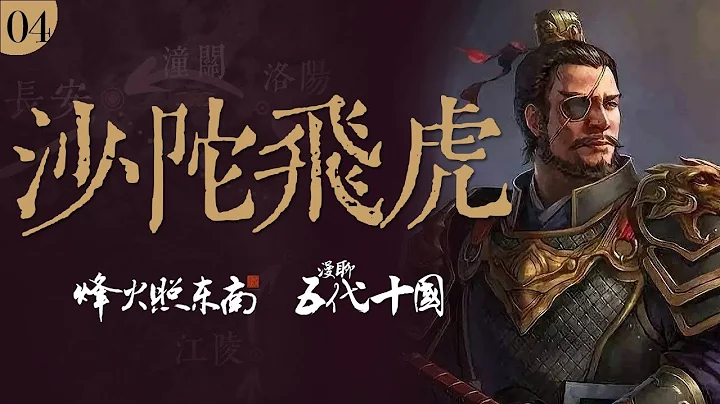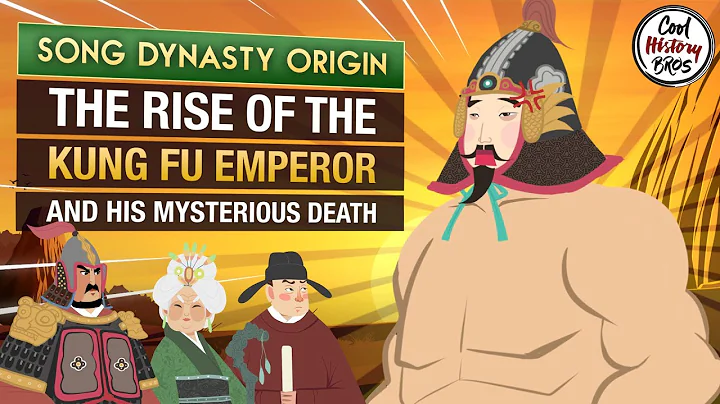The Khitan nationality once established a powerful kingdom in northern China, passed down to the 9th emperor, and enjoyed the country for 210 years. The territory is also very large. Today, all areas north of Baigou River in southern Hebei Province belong to the Great Liao State. This country, dominated by the Khitan nation, has a population of over one million. However, after the demise of the Liao Kingdom, we could not find the shadow of the Khitan. So, where did the millions of Khitans go? Why are there no Khitans now?

Territory map of Liao State
The above picture is the territory map of Liao State in its heyday, from the Sea of Japan in the east, the Altai Mountains in the west, the Erguna River and Daxingan Mountains in the north, and the Baigou River in southern Hebei Province in the south. very large.
This country was established by the Khitan nation. This ethnic group is a nomadic ethnic group in ancient China. It originated in Northeast China and adopted a semi-agricultural and semi-pastoral life. Regarding the Khitan records, there are clear records from the Tang Dynasty. The Khitan tribe was divided into eight Khitan tribes in the early period, and a unified Dahe Clan was formed in the early Tang Dynasty. After Emperor Taizong of the Tang Dynasty, the Tang Dynasty set up Songmo Dudu Mansion to govern this area. After the Dahe Alliance collapsed, the Khitans established the Yaoyan tribal alliance. In the last years of the Tang Dynasty, Yelu Abaoji, the leader of the Khitan nation, unified the various tribes. In 916, he became emperor and was named Khitan. In 947, the name of the country was changed to Liao.
is different from other ethnic groups. The Khitan people have their own scripts. The big Khitan characters and small Khitan characters still appear in some cultural relics. In addition, the Khitan people's literary attainments are also very high. Their works include poems, words, songs, fus, essays, chapter notes, scripts and other genres, and various themes such as narration, precepts, satire, and narration. The authors include emperors, clan families, officials, people from various tribes, and children of Zhang Langjun. What makes
even more enviable is that there are also many Khitan national painters who are good at painting grassland scenery and riding and shooting figures, and they have created a large number of excellent paintings. The paintings of famous painters Hu Gui, Hu Qian and his sons, and Yelvbei, the king of Dongdan, were mostly in the inner palace of the Song Dynasty, and were known as "sacred works."

The Khitan people
The Khitan people are brave and resourceful. Unfortunately, they were destroyed in 1125 by the rising Golden State. According to data records, Khitan has a large population of more than 1 million. But what is puzzling is that after the demise of the Liao Kingdom, these Khitan people drifted away like the wind, so that we can't find the shadow of the Khitan nation now.
So, where did these Khitan people go?
1. The local residents merged into the Jurchen clan
The last emperor of the Liao Kingdom was Emperor Tian Zuo. Facing the rise of the Kingdom of Jin, Emperor Tian Zuo could only be a desperate emperor. He went to the west and was finally killed. Domestic residents are integrated into the indigenous people of the Golden State. At that time, after the Jin Kingdom destroyed the Liao Kingdom, he was afraid of the Khitan national uprising and absolutely not allowed to be called the Khitan. Therefore, over a long period of time, the Khitan tribe merged into the Jurchen tribe, the main ethnic group of the Jin Kingdom.
2. Incorporating into Muslim residents
According to data records, before the demise of the Liao Kingdom, in 1124, the Minister of the Liao Kingdom Yelu Dashi (the eighth grandson of the Liao Taizu) was jealous of Emperor Tianzuo. In order to protect himself, he fleeed with 200 iron horses. On the way, more than 10,000 elite soldiers from various ministries were gathered and marched west. In 1132, Yelv Dashi became the emperor and was called "Xiliao" in history. Its territory extends from the northeast to Yemi River (now the Emin River in Xinjiang), with the land of Shannan Road in the east, the Aral Sea in the west, and the Aalya in the south. The Mu River was the largest power in the Western Regions at that time. At that time, many residents in Liao Dynasty saw the cruelty of Emperor Tianzuo, admired Yelu Dashi, and went from the west of Liao to seek refuge in Yelu Dashi.
Regrettably, Xiliao was only passed down for two generations. In 1218, it was destroyed by Mongolian generals. In 1222, the general of Xiliahe Hazhib led a part of Xiliao's subjects to flee to the Kerman Province of Iran and established the fully Islamized Qierman Dynasty, commonly known as "Hou Xiliao" or Xiqidan. In 1303, the Qierman dynasty was destroyed by the Ilkhanate, which was the last dynasty established by the Khitans. Later, these Khitans gradually integrated into the local Muslim residents.

Khitans
3, dispersed across the country
gold, and after the outbreak of the Mongolian War, some Khitans who "swear not to eat golden millet" took refuge in Mongolia, and were conquering with the Mongolian army, spreading to all parts of the country. However, these people are no longer able to gather together, and according to ethnicity, they should live in fixed areas.Many people can be called a nation. However, the Khitan tribe was too scattered, and in the end it was unable to continue to be called the Khitan tribe and integrate into all ethnic groups.
There are 56 ethnic groups in China, but there is no Khitan. However, with the arrival of science and technology, we have found a nation with Khitan blood. This nation is the Daur nationality.
Daur means "the original place", which is the hometown. For hundreds of years, the Daur people have been nomadic here, but where is their hometown? The Daur people don't know it, because they don't have any written words, so they can only pass on history through oral narration. A local legend of
aroused the interest of ethnic historians: A few hundred years ago, a Khitan army came here to repair the border fort, and has since settled here. The leader of this army is called Sakir Dihan, the ancestor of Daur. The legend
connects Daur and Khitan, but will the legendary story be the truth of history? As early as in the Qing Dynasty, someone suggested that Daur originated from Khitan, and some modern scholars have found a lot of evidence to show that Daur people inherited the most Khitan traditions through comparative studies on the production, life, customs, religion, language, and history of the Khitan and Daur people. Of the nation.

Khitan warriors
In Yunnan, the descendants of the Khitan were also discovered.
It is said that after the demise of the Liao Kingdom, Emperor Tianzuo’s eighth brother Ayu led his troops to move to Yunnan, Guizhou and Sichuan. They settled there, taking the first character of Abaoji and changing their surnames to A, and then changed their surnames to Mang and Jiang, and later called "I". 100,000, mainly scattered in Baoshan, Dali, Lincang, Yunnan and other places, belonging to more than 10 ethnic groups such as Han, Yi, Bulang, and Wa.
Since 2004, relevant experts have used DNA technology to identify the "I" surnamed Nan'a, Mang, and Jiang as descendants of the Khitan ethnic group. However, the Khitan people have maintained the "external marriage system" for more than a thousand years, so the Khitan people in the pure sense no longer exist. After constant migration, isolation, and integration, most of the Khitan people melted like ice thrown into the sea.





















